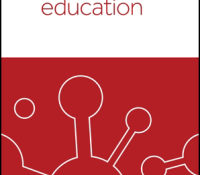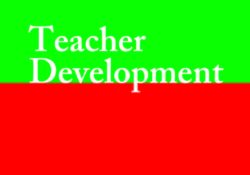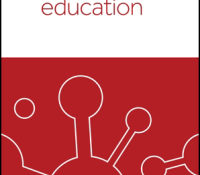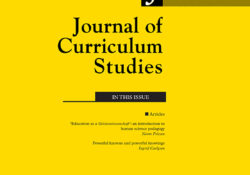tandfonline.com har udgivet en rapport under søgningen “Teacher Education Mathematics”: In the search for the ideal mentor by applying the ‘Mentoring for effective teaching practice instrument’ Link til kilde
Like this:
Like Loading...
eric.ed.gov har udgivet: The likelihood-to-act (LtA) survey measures impulsive and analytic dispositions in solving mathematics problems. The current version has 16 impulsive and 16 analytic items. Its validity was assessed using a sample of 27 in-service and 92 pre-service teachers. Both the impulsive and analytic subscales were found to have internal consistency reliability, but they were not correlated with one another. The impulsive subscale was predictive of correctness in classifying the LtA items. The analytic subscale was predictive of how well a participant would perform in Part 2 of a math test after taking Part 1 and being warned that some items could be tricky. [For the complete proceedings, see ED585874.] Link til kilde
Like this:
Like Loading...
eric.ed.gov har udgivet: In this paper, the authors report research focused directly on the validation of the Coding of Academic Teacher-Student interactions (CATS) direct observation instrument. They use classroom information gathered by the CATS instrument to better understand the potential mediating variables hypothesized to influence student achievement. Their study’s purpose is to gather the kinds of validity evidences that match the proposed interpretations and uses of the CATS instrument (Kane, 2008; Messick, 1995). Therefore, they first explore the content aspect of construct validity by collecting information about the content relevance and representativeness of the observation instrument (Messick, 1995). Second, concerned about the consistency of the observation data collected across a number of independent observers, they measure inter-observer agreement. Finally, they focus on the criterion-predictive aspect of construct validity and investigate… Continue Reading →
Like this:
Like Loading...
tandfonline.com har udgivet en rapport under søgningen “Teacher Education Mathematics”: Abstract Abstract When in 2014 the STEM Career Interest Survey (STEM-CIS) was developed, the researchers could check this instrument with other target audiences. Also, the question remained if the instrument was applicable for both boys and girls. This article describes the development and validation of a Dutch language version of it, called the STEM-LIT instrument, an instrument to measure the interest of children aged between ten and 12 years in Science, Technology, Engineering and Mathematics (STEM), focusing specifically on children from families with low socio-economic status (SES). The instrument has been adapted and developed in five stages and tested among Dutch primary school pupils in groups seven and eight (ages 10–11 and 11–12). The instrument was first tested in two… Continue Reading →
Like this:
Like Loading...
tandfonline.com har udgivet en rapport under søgningen “Teacher Education Mathematics”: ABSTRACT ABSTRACT This study examined collaborative professional development (PD) as a policy instrument for relating external ideas to present teaching practices. The study interprets the global emphasis policymakers place on collaborative PD as a response to the devolution of responsibility in many school systems, accompanied or followed by increased external guidance to local actors. In relation to these tendencies, collaborative PD may function either as a support for professional self-governance or enable increased top-down control. Thus, by analysing collaborative PD as a policy instrument, the study contributes to the understanding of the contemporary governing of public education. The analysed empirical material derived from a large-scale PD program organized by the Swedish National Agency for Education. The results show that the… Continue Reading →
Like this:
Like Loading...
eric.ed.gov har udgivet: After having secondary math education majors write an essay entitled, “What is Mathematics?” for the past 4 years, the first attempt was made to create an instrument based on the results of these essays that would measure math beliefs. Based on previous research which suggests that a math teacher’s beliefs influence the teacher’s methodology, the instrument was administered to elementary education majors to determine their methodological tendencies. The results are compared to similar data obtained from secondary math education majors (n=11) and urban, college-bound high school juniors (n=13). The results suggest that elementary education majors who expect to teach mathematics need a broader vision of what mathematics is. Appendixes contain the survey instrument and results. (Author/NB) Link til kilde
Like this:
Like Loading...
eric.ed.gov har udgivet: Anxiety becomes one of the psychological symptoms that can appear in every student while solving mathematics problems. Anxiety cannot be denied to be one factor that affects students’ learning outcomes and interest in mathematics. Therefore, teachers should concern on this matter in order to decide the appropriate learning strategy. However, there is no instrument to measure the level of students’ anxiety towards mathematics, especially for junior high school students. For that reason, this research aims to: (1) design the construct of math anxiety scale instrument; and (2) find out the validity of the instrument. This research used Research and Development method to develop and validate the product which is in the form of a questionnaire. The analysis techniques used V Aiken for content validity, EFA for construct… Continue Reading →
Like this:
Like Loading...

tandfonline.com har udgivet en rapport under søgningen “Teacher Education Mathematics”: Abstract Abstract Motivated by experience with students’ psychological barriers to learning statistics, we modified and extended the Statistical Anxiety Rating Scale (STARS) to develop a contemporary and valid (face, content, criterion and construct) Danish measure of attitudes and relationship towards statistics for use with higher education students taking statistics within another discipline. Two subscales were excluded because of lack of conceptual unidimensionality or derogatory content, and single items were modified for face and content validity enhancement in the remaining subscales. Following a pilot study and main study, the resulting 26-item Danish instrument (HFS-R for “holdninger og forhold til statistik – Revideret”, in English “Attitudes and Relationship to Statistics – Revised”) consists of four subscales: Test and Class Anxiety (TCA), Interpretation… Continue Reading →
Like this:
Like Loading...

tandfonline.com har udgivet en rapport under søgningen “Teacher Education Mathematics”: Abstract Abstract Many educational technology proponents support the Technological Pedagogical Content Knowledge (TPACK) model as a way to conceptualize teaching with technology, but recent TPACK research shows a need for empirical studies regarding the development of this knowledge. This proof-of-concept study applies mixed-methods to investigate the meta-cognitive awareness produced by teachers who participate in the Graphic Assessment of TPACK Instrument (GATI). This process involves creating graphical representations (circles of differing sizes and the degree of their overlap) that represent what teachers understand to be their current and aspired TPACK. This study documented teachers’ explanations during a think-aloud procedure as they created their GATI figures. The in-depth data from two German teachers who participated in the process captured the details of… Continue Reading →
Like this:
Like Loading...




